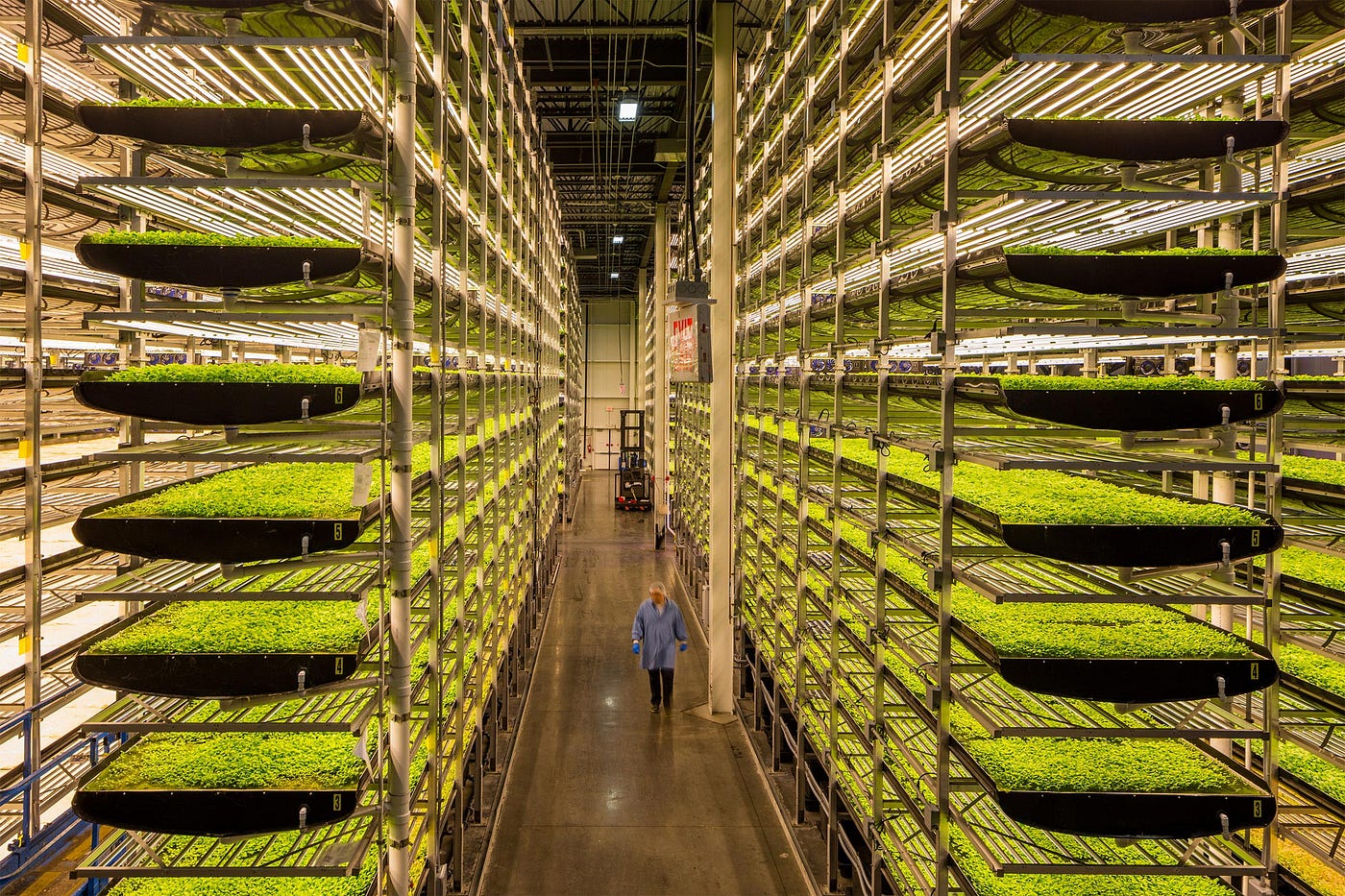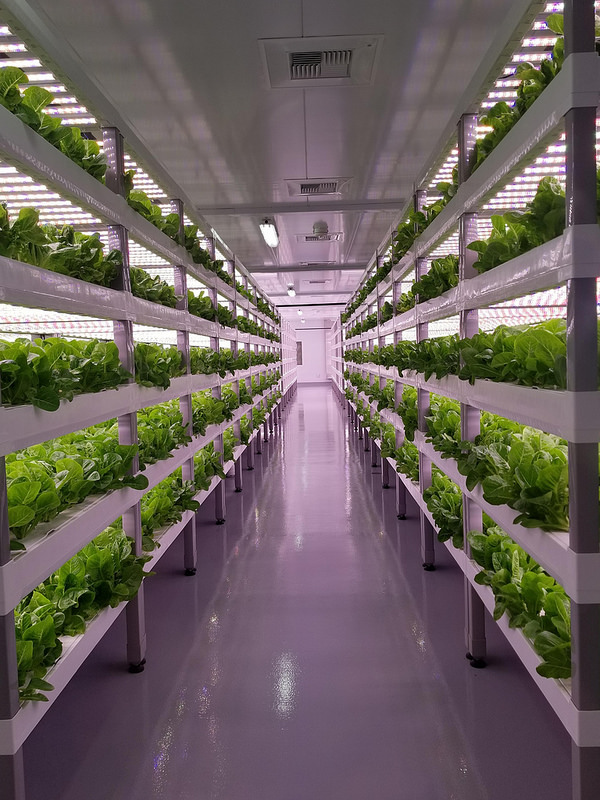Reach New Heights in Growing: Hydroponic Vertical Farming
Are you curious about Hydroponic Vertical Farming? Well, let me tell you all about this innovative and exciting method of growing plants. Imagine a farm where plants grow vertically, without soil, using water, and nutrients. It’s like a futuristic garden!
Hydroponic Vertical Farming is a technique that allows us to maximize space and yields, making it a game-changer in modern agriculture. Instead of traditional soil-based farming, plants are grown in nutrient-rich water, with their roots suspended in the air. This vertical setup not only saves space but also optimizes light exposure, leading to faster and more abundant harvests.
With Hydroponic Vertical Farming, we can grow a wide variety of crops, from leafy greens and herbs to fruits and vegetables. Plus, this method offers several advantages like reduced water usage, no need for pesticides, and the ability to grow crops all year round. It’s a sustainable and efficient way of farming that’s taking the world by storm.
So, get ready to explore the fascinating world of Hydroponic Vertical Farming with me. We’ll uncover its benefits, learn about the different types of setups, and discover how this method is revolutionizing the way we grow our food. Let’s dive into this exciting adventure together!
Want to revolutionize your gardening? Discover the wonders of vertical hydroponic farming! This innovative technique maximizes space and nutrient absorption, resulting in higher yields and faster growth. With hydroponic vertical farming, you can grow a wide variety of plants without soil, making it ideal for urban settings or limited garden space. Embrace this sustainable and efficient farming method today!

The Future of Farming: Exploring Hydroponic Vertical Farming
Welcome to the world of hydroponic vertical farming, where agriculture meets innovation and sustainability. In this article, we will take a deep dive into the concepts and benefits of this cutting-edge farming technique. From the basics of hydroponics to the advantages of vertical farming, we will explore the intricacies of this modern agricultural revolution. Let’s embark on this journey together and uncover how hydroponic vertical farming is reshaping the future of food production.
The Basics of Hydroponic Vertical Farming
Hydroponic vertical farming is a method of growing plants without soil, using a nutrient-rich water solution. This technique allows plants to receive optimal nutrition while eliminating the need for traditional soil-based agriculture. In a vertical farming setup, plants are stacked vertically in specially designed structures that maximize space utilization. Artificial lighting, irrigation systems, and precise environmental controls create an optimal growing environment for plants.
One of the key advantages of hydroponic vertical farming is its ability to conserve water. Unlike traditional farming methods, hydroponics uses up to 90% less water, making it an environmentally sustainable choice. This method also eliminates the risks associated with soil-borne diseases and pests, resulting in healthier, pest-resistant crops. Additionally, vertical farming reduces the need for extensive land use, making it an ideal solution for urban areas where arable land is limited.
Several variations of hydroponic systems exist within vertical farming. These include nutrient film technique (NFT), deep water culture (DWC), and aeroponics. Each system has its own set of advantages and considerations, depending on the specific plant species and growth requirements. Hydroponic vertical farming is a complex field that combines biology, horticulture, and engineering to create optimal conditions for plant growth.
Advantages of Hydroponic Vertical Farming
The advantages of hydroponic vertical farming are manifold, making it a compelling choice for sustainable food production. Firstly, this farming method allows year-round production regardless of weather conditions, ensuring a consistent supply of fresh produce. By controlling the environment, growers can manipulate temperature, humidity, and lighting to create the ideal conditions for each crop.
Another notable advantage of hydroponic vertical farming is its significantly higher crop yield compared to traditional farming methods. With optimal growing conditions and efficient use of resources, farmers can produce more food per square meter of space. This increased yield potential makes hydroponic vertical farming an attractive option for addressing food security challenges in densely populated areas.
In addition to increased productivity, hydroponic vertical farming also offers a solution to the issue of food miles. By growing food locally, this method reduces the need for long-distance transportation, decreasing carbon emissions and ensuring fresher produce for consumers. Furthermore, the controlled environment of vertical farms minimizes the use of chemical pesticides and herbicides, resulting in healthier and safer food.
The Role of Technology in Hydroponic Vertical Farming
Technology plays a vital role in the success of hydroponic vertical farming. From precision irrigation systems to data-driven analytics, innovations in agriculture technology have revolutionized the way crops are grown. Automated systems monitor and adjust environmental conditions such as temperature, humidity, and lighting to optimize plant growth.
Sensors embedded in the growing systems continuously collect data on factors such as nutrient levels, pH levels, and plant growth rates. This data is analyzed to make real-time adjustments and ensure optimal growing conditions. Additionally, advanced lighting technologies, such as LED and artificial lighting systems, provide the perfect spectrum and intensity of light for photosynthesis.
Integration of technology extends beyond the growing systems themselves. Vertical farming facilities often utilize advanced robotics for tasks such as seedling planting, harvesting, and packaging. These autonomous systems increase efficiency, reduce labor requirements, and minimize human error.
Key Takeaways: Hydroponic Vertical Farming
- Hydroponic vertical farming is a method of growing plants without soil, using nutrient-rich water.
- Vertical farming allows plants to be grown in stacked layers, maximizing space utilization.
- This farming method provides a controlled environment, minimizing pest and disease issues.
- Hydroponic vertical farming conserves water by reusing nutrient solution and reducing evaporation.
- It offers a sustainable solution for urban areas with limited land availability.
Frequently Asked Questions
Welcome to our Frequently Asked Questions section on the topic of Hydroponic Vertical Farming. Here, we’ll address some common queries related to this innovative farming technique. Read on to learn more about the advantages, setup, and benefits of hydroponic vertical farming.
1. How does hydroponic vertical farming work?
Hydroponic vertical farming is a soil-less farming technique that involves growing plants vertically in stacked layers. Nutrient-rich water is circulated through the system, delivering essential minerals directly to the plant roots. This allows plants to grow efficiently in a controlled environment without the need for soil.
By utilizing vertical space, hydroponic vertical farming maximizes yield per square foot. It combines the use of artificial lighting, precise nutrient delivery systems, and climate control to create optimal growing conditions. This method is perfect for urban areas with limited space or regions with challenging soil conditions.
2. What are the advantages of hydroponic vertical farming?
Hydroponic vertical farming offers numerous advantages over traditional farming methods. Firstly, it allows for year-round cultivation regardless of external weather conditions, providing a consistent supply of fresh produce. Secondly, it requires significantly less water compared to soil-based farming, making it a more sustainable option. Additionally, this farming technique eliminates the need for pesticides and herbicides, resulting in healthier and safer food products.
Furthermore, hydroponic vertical farming reduces the carbon footprint associated with food production by eliminating transportation from distant farms. It also reduces land usage, making it ideal for urban areas where space is limited. Lastly, this farming method provides the opportunity to grow crops closer to consumers, resulting in fresher and more nutritious produce.
3. What types of crops can be grown using hydroponic vertical farming?
Virtually any crop can be grown using hydroponic vertical farming. Leafy greens like lettuce, spinach, and kale are popular choices as they have a shorter cultivation period and high demand. Herbs, such as basil, mint, and cilantro, also thrive in this farming system. Additionally, strawberries, tomatoes, cucumbers, and even certain root vegetables like radishes and carrots can be successfully grown using hydroponics.
The versatility of hydroponic vertical farming allows farmers to experiment with a wide range of crops while tailoring the system to meet specific requirements like temperature, lighting, and nutrient levels. This flexibility makes it a viable solution for a variety of crops and enables farmers to cater to the demands of local markets.
4. What are the key components required for a hydroponic vertical farming system?
A hydroponic vertical farming system typically consists of several key components. These include vertical towers or racks to hold the plants, planting trays or containers to support the crops, a nutrient reservoir to store the nutrient solution, a pump to circulate the solution, and an irrigation system to evenly distribute the solution to the plants’ roots.
In addition to these components, hydroponic vertical farms are equipped with artificial lighting, such as LED or fluorescent lights, to provide the necessary spectrum for plant growth. Climate control systems, including temperature and humidity regulation, ensure optimal growing conditions. Lastly, water quality monitoring systems and pH adjustment mechanisms are essential to maintain the stability and balance of the nutrient solution.
5. What are the benefits of hydroponic vertical farming for the environment?
Hydroponic vertical farming offers several environmental benefits. Firstly, it requires significantly less water compared to traditional farming methods since water is continuously recirculated in the system. This conservation of water helps alleviate strain on water resources, especially in regions prone to drought or limited water availability.
Secondly, by eliminating the need for pesticides and herbicides, hydroponic vertical farming reduces chemical runoff, which can harm nearby ecosystems and contaminate water sources. Additionally, this farming method reduces the carbon footprint associated with long-distance transportation and eliminates the need for large-scale land clearing for agriculture. Overall, hydroponic vertical farming promotes sustainable and eco-friendly food production practices.

Vertical Farming with Aeroponics: Top 7 Benefits of a Tower Farm
Summary
Vertical farming is a cool way to grow plants without soil. They use water and special lights to help the plants grow big and healthy. This method saves space, water, and even uses less time and energy. It’s a smart and sustainable solution for growing food in cities.
Plus, vertical farming doesn’t need pesticides or harmful chemicals, which is great for the environment and our health. It can also help us have fresh and nutritious food all year round, no matter the weather outside. So, next time you hear about hydroponic vertical farming, remember it’s a clever way to grow food sustainably and efficiently.

